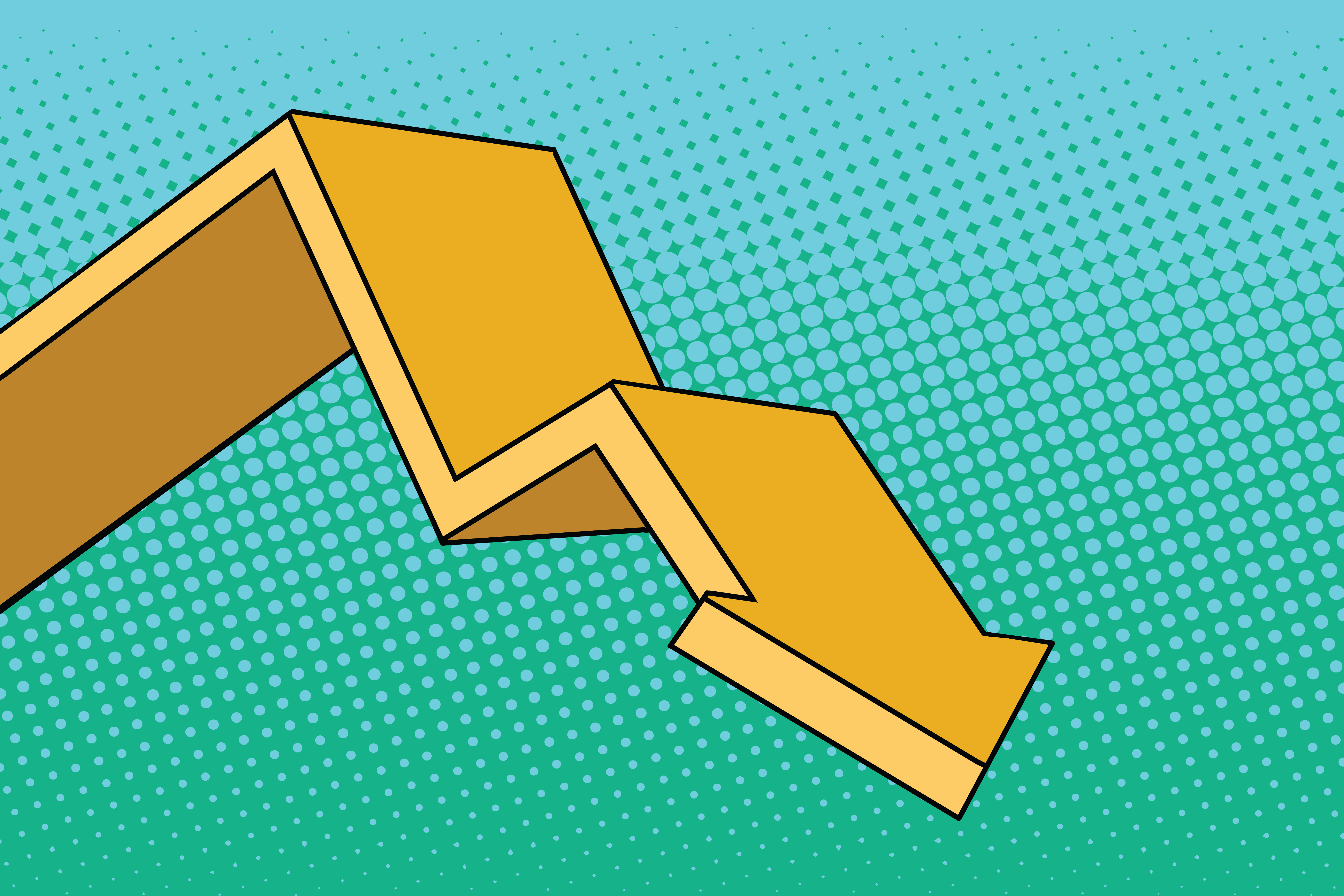Low interest rates are good … or are they?
With all the back and forth between every financial ‘guru’ these days, it’s hard to know what’s best for the markets and economy anymore.
Anybody who’s dabbled in the stock market at all knows that the markets are far from rational.
And while some pundits earnestly discuss earnings, valuations, and company guidance …
Some of us understand that the market and stocks can move for, well, less logical reasons.
Take, for example, low interest rates … everyone’s got an opinion. Here’s a quick break down.
Table of Contents
How the Federal Funds Rate Affects Consumers
The interest rate you pay to finance all those late-night online purchases is strongly influenced by the federal funds rate. But what exactly is the federal funds rate?
Simply put, the federal (or fed) funds rate is the interest rate that banks and financial depositories charge to lend money to each other. They do that as reserve requirements dictate, mandated by law.
Cash held in reserve can’t be invested in any way. That money is earmarked to cover liabilities. So financial institutions prefer to keep only the legally required minimum on hand.
So banks will borrow or loan out money through surpluses and deficits, to keep a steady level of reserve cash on hand. And as banks borrow, they need to make up for costs on their end. So they charge customers a rate that’s over the fed funds rate.
And that’s why so many traders and investors follow interest rates so closely. If the fed funds rate is high, the cost of doing business goes up. That can hinder companies from expanding and growing. And any slowed growth for a company can put a damper on its stock.
A Lower Fed Funds Rate Can Bode Well for the Market
Check out this study of the fed funds rate from January 1955 to October 2019 … The study looked at the relationship between the S&P 500 and the fed funds rate.
When the rate was high, 10% or more as in the mid-70s and early 80s, the S&P 500 posted an average monthly loss of 0.36%.
Compare that to periods where the rate was low — less than 1%. The index saw a 0.9% average monthly gain. That happened throughout both the 50s and 60s and from November 2008 to June 2017.
So overall, a low rate can be a boost for the market. But can rates be too low?
Are Current Interest Rates Too Low?
Since the first quarter of 2008, the fed funds rate has been south of 3%, and the S&P 500 has more than doubled.
But from March of 1990 to September of 2001, the fed funds rate never dipped below 3%, and the S&P 500 surged by 240%.
So does this mean that a higher fed funds rate can be good for the markets? Historically, most people don’t think so. And despite any data on higher interest rates and strong market performance, the current downward trend in interest rates will be hard to break.
Don’t Go Changin’
Remember how we noted just a bit ago how the markets aren’t always rational? The same is clearly true when it comes to interest rates.
People, regardless of their market knowledge, tend to have knee-jerk reactions to any changes in the fed funds rate. Lower equals good, higher equals bad. Period. End of story … right?
Well, since 1955, the average monthly gain in the S&P 500 following an interest rate hike is 0.35%. It’s 0.55% when rates are static. And get this, it’s 1.06% when rates drop from one month to the next.
There’s little difference between drops from a higher rate and drops from the kind of lower rates we’re seeing today. Again, it all comes down to that simple credo: hikes bad, cuts good.
So it could be really difficult to raise interest rates in our current climate of low interest rates. Any talk of raising rates can cause every finance ‘expert’ to fly into a tizzy and stir hints of panic. The sentiment seems to run deep.
But it may be a consequence of having a low rate for such a long period.
The Fed has certainly noticed. Chairman Jerome Powell notes that the Fed is in a unique position these days. And there may not really be a policy or playbook to reference to help the U.S. economy out of this particular tough spot…
The First Cut Shouldn’t Be the Deepest
There’s another thing that Powell should be concerned about — cutting the rate too much at any given time.
Some emphasize that size really does matter … when it comes to cutting the fed funds rate anyway.
If the Fed cuts just enough of the rate, the market can see a boost. To put that in real numbers, we’re talking 25 basis points or less.
But if the Fed takes too much off the rate, it can lead to a recession. That’s when it’s a cut of 50 basis points or more. Would that recession be the Fed’s fault? Maybe. The Fed may fail to act quickly enough or it may move in too aggressively.
Will There Be Any Cuts?
Despite some enthusiasm for cuts, there are rumblings that there won’t be any cuts at all.
A lot of traders and experts believe the Fed should stand pat. The argument? Growth is solid, and overall, we’re prepared to deal with rising inflation. If the outlook seems rosy, why mess with it?
That’s a bit simplistic. The reality is that markets constantly change.
What’s the best move, then?
It’s tough to say. On one hand, you have those railing against any change in the rate — up or down. If the Fed waits too long to act, it could do so at the risk of recession. And the Fed’s current policies may not be up to snuff to deal with today’s circumstances.
Plus, global factors, like the trade war with China, are throwing major curveballs. Uncertainty? Oh yeah.
On the other hand, we have advocates for a strong current U.S. economy and an accommodating policy. There may be some mild concerns over low inflation, but it could reach the Fed’s 2% target. And the two previous fed fund rate cuts in July and September might just keep the U.S. economy humming along.
A wait-and-see approach may be the best we can do right now.
What It All Means for Traders
Whatever happens with rates, we won’t likely see results right away. That can be great news for you, trader. You’ll have lots of time to study the past and understand how to intelligently adapt to a changing market.
Keep your eye on the market and the market news … A rate drop could boost economic growth, which could bolster stock prices. Or that growth could lead to inflation.
An increase in the rate could ease inflation. The downside is that it can lead to less spending, slower growth, and lower stock prices.
StocksToTrade
There’s your low down on interest rates and the fed funds rate. So how do you put all this new knowledge into practice?
Hopefully, you’re pumped to start checking out some stock charts and analyzing stock performance.
(Pro tip: StocksToTrade has an awesome feature that lets you save and export charts. So you can study charts and patterns as much as you like. Check it out with a 7-day, $14 trial today!)
A stock screener can help you find trending stocks, view charts, and check out historical performance.
That’s where StocksToTrade comes in. Our powerful stock trading and research platform is designed by traders for traders. We want to help the individual trader find the most promising stocks to trade. Here are just some of the features:
- A stock screener to help you scan thousands of U.S. stocks — all based on your trading criteria. Add fundamental and technical filters that work for you. You’re just a few clicks away from finding stocks that suit your trading needs.
- Charts galore! At StocksToTrade, we love charts. So we’ve designed easy-to-read charts that help you easily track the price action, technical indicators, and even place trading alerts for stocks.
- Watchlists: Manage multiple lists of stocks you’re watching for action. Sort by sector, industry, or whatever works for you.
- A thorough news scanner: We didn’t just stop with the news when we built our platform. We wanted to include anything that could be a catalyst, like SEC filings, press releases, and social media buzz. It’s all built right in to help you stay up to date.
These are just a few of the features that StocksToTrade has to offer. But we want you to see for yourself. Get your 14-day trial of StocksToTrade for just $7 today! Find out why so many top traders love our platform.
The Bottom Line
Regardless of whether low interest rates really make sense for the economy as a whole, they can generally be a good thing. So can a low fed funds rate (below 3%).
And with today’s historically low rates, a rate hike could be negative. Especially when nearly everyone is expecting a rate cut.
Only time will tell what the Fed will do next. So don’t sit idly by. Use this time to study past markets and see how stock prices may move. History doesn’t always repeat itself, but it can often rhyme.
Feeling lonely and uncertain in the markets? Join STT’s lead trainer Tim Bohen and the STT Pro community. Get access to daily webinars, educational materials, trading chat rooms, and network with traders just like you. Join now!
How do you think interest rates will move — and how do you think the markets will react? Leave a comment!





